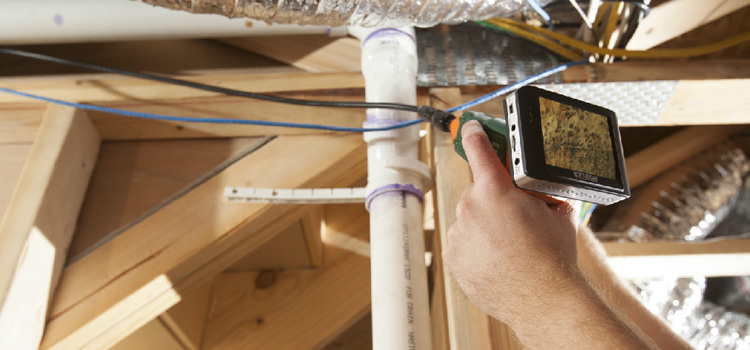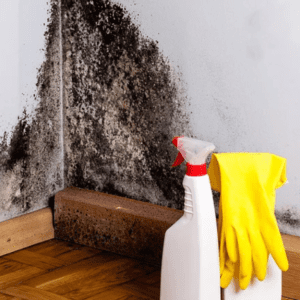Situating Post Remediation Inspection Near Me Services
Situating Post Remediation Inspection Near Me Services
Blog Article
Your Ultimate Guide to Post Mold And Mildew Removal Methods
Browsing the world of post-mold remediation methods is a careful procedure that requires interest to detail and an extensive understanding of the intricacies involved. In the aftermath of mold and mildew problem, understanding how to effectively eradicate the mold and mildew and avoid its reoccurrence is extremely important for maintaining a healthy and balanced indoor environment. From choosing the right cleansing and disinfecting techniques to implementing methods for long-term mold and mildew prevention, each action in the remediation trip plays a crucial function in guaranteeing an effective result. As we start this expedition of post-mold remediation techniques, we will certainly uncover the vital methods and ideal techniques that can assist you recover your space to its pre-mold problem and safeguard it versus future mold hazards.
Comprehending Post-Mold Remediation Process
After completing the mold removal process, it is crucial to recognize the post-mold removal techniques that are necessary to make sure a reliable and extensive cleanup. Once the mold has been gotten rid of, the following step entails cleaning and disinfecting the impacted locations to avoid any kind of regrowth of mold. This includes making use of specialized cleaning up agents to clean down surfaces and eliminate any kind of staying mold spores. It is necessary to dry the area completely to dissuade the growth of mold and mildew in the future (what to do after mold remediation). Correct air flow and dehumidification can aid in this procedure.
Additionally, carrying out a last examination post-remediation is important to ensure that all mold and mildew has been successfully removed. This assessment must entail a comprehensive visual check in addition to potentially air tasting to validate the absence of mold spores airborne. If the examination exposes any type of lingering mold and mildew, added removal may be essential. Last but not least, informing occupants on safety nets such as regulating moisture levels and without delay resolving any type of water leakages can help maintain a mold-free environment.
Effective Cleaning and Disinfecting Approaches

Avoiding Future Mold And Mildew Growth

Significance of Proper Ventilation
Appropriate ventilation plays an essential role in protecting against moisture accumulation, a key factor in mold and mildew development within interior environments. Efficient ventilation systems assist remove excess moisture from the air, decreasing the opportunities of mold and mildew spores locating the wetness they need to spread and germinate. Without appropriate ventilation, interior spaces can come to be a reproduction ground for mold and mildew, bring about potential health and wellness risks and architectural damage.
By ensuring correct air flow, ventilation systems can additionally help in drying out damp locations much more quickly after water damages or flooding cases, further discouraging mold growth. testing air quality after mold remediation. Precede like bathrooms, attics, basements, and kitchens where moisture degrees often tend to be greater, mounting and maintaining reliable air flow systems is crucial in avoiding mold infestations

Monitoring and Upkeep Tips
Provided the essential role that proper air flow plays in preventing mold growth, it is essential to develop reliable monitoring and maintenance pointers to make certain the ongoing functionality of air flow systems. Normal inspections of air flow systems must be carried out to check for any kind of indications of blockages, leakages, or malfunctions that can hamper correct air movement. Monitoring humidity degrees within the residential property is likewise important, as high moisture can add to mold and mildew growth. Mounting a hygrometer can assist track humidity levels and sharp house owners to any spikes that may call for focus. Additionally, making sure that air filters are consistently cleansed or changed is crucial for maintaining the performance of the air flow system. Implementing a routine for routine maintenance tasks, such as air duct cleaning and heating and cooling system examinations, can assist helpful resources stop concerns before they intensify. By remaining proactive and alert to the condition of air flow systems, homeowner can properly mitigate the danger of mold regrowth and preserve a healthy indoor setting.
Verdict
To conclude, post-mold remediation methods are essential for guaranteeing a secure and tidy setting. Understanding the process, carrying out reliable cleaning and decontaminating methods, protecting against future mold and mildew development, preserving proper air flow, and regular monitoring are all vital actions in the removal process. By adhering to these guidelines, you can effectively get rid of mold and mildew and prevent its return, functioning or advertising a healthy and balanced living space for all residents.
In the results of mold and mildew infestation, knowing just how to successfully get rid of the mold and mildew and stop its reoccurrence is paramount for keeping a healthy interior setting. When the mold has been gotten rid of, the next action entails cleaning and sanitizing the influenced locations to avoid any type of regrowth of mold and mildew - what to do after mold remediation. After getting rid of visible mold development, it is important to cleanse all surface areas in the affected location to remove any kind of staying mold and mildew spores. To better enhance mold prevention measures, it is necessary to resolve underlying concerns that originally led to mold advancement.Provided the vital function that appropriate ventilation plays in avoiding mold growth, it is critical to establish effective surveillance and maintenance tips to make sure the continued capability of air flow systems
Report this page